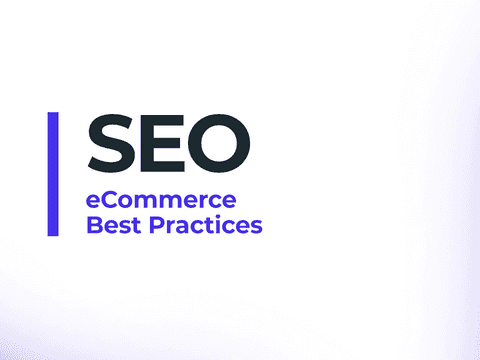Building a consistent and powerful brand strategy for an eCommerce business is not an easy task, but there are proven tactics you can use to attract new customers and keep existing clients engaged with your brand.
Coca-Cola, which is a world-wide recognised company in terms of product and branding, spends an average of $4 billion on this department each year.
However, not every business needs to invest such amounts on brand building and recognition. All you may be missing to create and perfect your branding could be the 6 tactics we share in this article. Keep reading to find out which these are and how you can measure their result with 5 different KPIs (key performance indicators).

What is branding? How does it affect your eCommerce?
Branding is the concept and process behind creating, positioning, promoting, and distributing a product and/or company.
These processes help consumers identify your brand and differentiate it from your competitors, emphasizing what makes your business shine.
The main goal of branding should always be to attract and retain loyal customers (and other stakeholders) by delivering a product that is always aligned with the brand promise.
In order to have a branding strategy that works, you must implement tactics that are aligned with the same goal. Depending on the business, these tactics will vary, but as a general rule, the tips we share below can help any eCommerce business create a clear and powerful retail branding strategy.
Advantages of branding for eCommerce
Branding brings different benefits to eCommerce businesses, but these sum up the most important ones:
Business visibility boost
A strong and cohesive image lasts in someone’s mind. A distinct logo, attractive colors, and clearly defined visuals will always be more memorable. If you add a catchy tagline to the mix, your retail branding will be even more successful.
Whenever a potential customer is impacted by your brand, even if it’s only for a moment, your company will influence them simply because they’ve seen your brand before. This will make them biased and increase the possibility of them purchasing from you for the first time.
Brand visibility starts in the customers’ mind.
Better purchasing experience
Having your website and communications aligned results in a better purchasing experience. In the end, good branding makes you a more relatable business and can help you connect with your customers, which plays into the human side of retailing and uses psychology to your advantage.
But in addition to this, strong branding gives customers a clear idea of what you want from them and how you see them. In other words, it helps build a community of consumers with similar traits.
Having a sense of belonging is one of the most powerful tactics when it comes to engagement and retention.
Increased customer trust and loyalty
When a business makes an effort to create a clear and professional-looking website, it makes it easier to choose between that brand and other brands that are missing key elements of branding. A bland brand image is simply a red flag for most customers when it comes to trust, which is why retail branding plays such an important role in the acquisition and retention of clients.
But there’s more to it. As more retailers realize the power of a strong brand image, it’s becoming a more and more demanding task.
Nowadays, to make an eCommerce business shine, you’ll need more than just “having” branding. Showcase your brand in an original way that lasts in your customers’ mind. Be bold, be sweet, be simple, be colorful; whatever works for your business voice and buyer persona, and as long as it all aligns.
Business durability
With the increase of customers’ trust, loyalty, and repeat purchases, the durability and sustainability of your online store is almost guaranteed.
Coming back to Coca-Cola’s example, while it is inaccurate to attribute all of their success to the right branding strategy, the clear mental image this brand built is definitively part of the reason why people choose their beverage over other brands.
In this case, the sum Coca-Cola spends on these types of activities is more than justified and goes beyond simply acquiring more customers or retaining current loyal consumers of the brand.
It evolves with time and adapts to the new needs and preferences of society, or, at least the needs and preferences of Coca-Cola’s consumers.
As you can see, the investment in brand image — which isn’t optional at all — will always result in profits for your business. That is, with the right tools and tactics.
6 branding tactics to create or tweak your eCommerce
To create the perfect branding, start by following these steps:
1. Use the power of words: your name & storytelling
The name of an eCommerce business can play a huge role in their success or failure. The name of your brand should give a clear idea of what you do. An easy way to choose your brand name is to study and understand your competitors’ names.
But you shouldn’t stop with the name.
Storytelling, although not as easy as it may sound, can be implemented in many different parts of your marketing strategy.
From advertising to packaging, you can use your business to tell a story that resonates with your audience and is remembered in the future. One of the most popular uses of storytelling is to promote and sell a product, but it can also be part of your retail branding strategy.
For instance, see how Apple uses innovation as one of their main concepts, from stories and how their buyer personas are incorporated into advertising campaigns. The perfect synergy of these two elements is part of their strategy, and is proven to be successful when creating a relatable story.
2. Choose a color palette that aligns with your business
The color palette chosen by an eCommerce store will be a part of many areas of the business, including the website, packaging, and social media profiles.

A color palette should ideally consist of 3 to 5 colors that are related to your sector, the values, and branding of your eCommerce store. The most successful brands out there are characterized by a minimalistic color palette that has few colors, but matches perfectly with their industry and type of customer.
One of the easiest ways to choose the right colors is by using a color picker. Without the help of a designer, this is your best option. These types of tools help you choose colors that will be the base for the rest of your visuals.
3. Align your typography, logos, voice, and visuals
Yes, typography is also important. Different fonts can make the reader feel different sensations: seriousness, trust, movement, innovation, simplicity, etc.
Choosing typography that complements your brand colors, logo, and overall essence is vital for the success of your branding strategy, especially if you design a wordmark, monogram, or mascot logo.
Since logos can be created in different ways (wordmark, lettermark, pictorial mark, abstract mark, combination mark, mascot logo, or emblems), keep in mind your buyer persona and the vision, mission, and values of your company. This will help you choose the type of logo that better suits your characteristics.
Generally speaking, famous logos are defined by versatility, simplicity, and timelessness. If you want yours to be included in the next generation of successful logos, keep these concepts in mind.
Logos are normally the first visual element buyers come across, making them crucial when it comes to marketing and branding.
They may even sometimes appear without text. This is why your design needs to be powerful enough to represent the brand without its written representation.
Now, for the last part: the voice. The voice or tone of the brand is more difficult to design and convey.
Your brand voice is intimately related to the feeling you want to trigger in your customers. It can be conveyed through your colors, shapes, words, music, and even scent. What is really important here is that, as with the rest of the branding elements, you keep it consistent.

If you’re planning on using product photos and other visuals on your website, social media channels, advertisements, products, packaging, and other types of communications (everything that sends a message or conveys a feeling should be considered communication), you need to take into consideration not only your colors and typography but also the tone of your company, as tone goes beyond these aspects.
For instance, if you decide to use models to showcase your product, use them on all of your product pages in order to be consistent. This improves the user experience and can help boost the conversion rate.
4. Show your human side
Being too serious when it comes to your branding strategy and communications only works in some cases.
Generally speaking, more personalized communications have better results in terms of sales and customer service. Try to customize all your communications; this will help you gain the trust of your customers as they get to know your business and engage with it more frequently.
However, you shouldn’t use these communications only to showcase your business. Take advantage of the opportunity and use all the information that you gathered about your buyers to create better marketing campaigns that are targeted to your audience. For instance, you can display best-selling products or your new launches on these communications through a banner.
Ready to upsell products with branded emails? Outvio automates this process for you and helps you increase your sales by 1.2% thanks to its cross-selling marketing features.
5. Create a brand guide for consistency
To ensure your visual and written content stays consistent across all channels, it’s fundamental to put your branding rules onto paper.
The images and written content you post should represent your brand with its colors, typography, and tone.
Some of the aspects that need to be included in your branding guide are: your buyer persona; your mission, vision, and values; the colors and font of your brand; what you want to convey and how you plan to do it; and basic & general guidelines to perform when it comes to communicating with your audience.
This document should be accessible to all members of your business. Whether they are in direct contact with customers or not, having a clear understanding of the image of the company they work for is fundamental to know in which direction you are moving, what your priorities are, what your buyer personas are, and how your team should portray the brand.
6. Use data and automation to make connections
Obtaining users’ information is an unmanageable process when you don’t use the right tool to store, process, and automate data.
Because having knowledge of your customers and updated & measurable information about your business is so important, the use of software systems has become vital nowadays.
Outvio is a great example of a platform that helps online stores streamline and automate processes to set up clear workflows that align with your brand goals and customers needs.
For instance, it doesn't just automate fulfillment tasks, shipping, and customer service, but it also provides marketing tools to automate notifications and customize your very own tracking and returns pages.
A system like Outvio can help your online store obtain analytics about which products are the best-sellers, which seem to be more frequently returned, the repurchase rate of a product, and which customers are more loyal to your brand.
Branding metrics to evaluate your eCommerce branding strategy
Your branding tactics went live and now you are asking yourself how you can measure the success of your branding strategy. These are some of the most important branding metrics to track:
Viewable impressions
Viewable impressions is a branding metric that gives insights on the effectiveness of your PPC (pay-per-click) campaigns. It measures how many users got to see your ad for at least one or two seconds.
While in some industries this metric won’t have a direct relation with your sales numbers, in the case of retail, the impact a picture can have on a potential customer is worth considering - and it should definitely be measured.
Viewable impressions = Number of 1 or 2-second views on 50% of the branding effort
Website traffic
Although not every visit will bring a conversion, measuring your website traffic can give you information on the success of certain campaigns once your website traffic has reached a consistent volume of visits.
If you are planning on changing aspects of your website and branding strategy with any of these tactics, measure your traffic before and after the changes to really quantify the results of your marketing actions.
By checking this information, you can even discover the biggest sources of traffic for your website, whether it’s a particular product or product type, the launch section, or your homepage.
Branded searches
This branding metric is directly related to the size and popularity of your brand. In the beginning, the amount of branded searches will be low (or even impossible to measure) in SEO tools such as Ahrefs or Semrush, but you will be able to check it in your Google Analytics account and Google Search Console.
However, as your business grows, it’s important to keep an eye on this KPI and compare it with your competitors. You may not get 100% accurate data since you can’t access their Google Analytics or Search Console, but if they have a considerable size, you can check their search volume in Google Trends or the above-mentioned SEO tools.
Once your brand has a stable position in the market, you may need to track this KPI in new markets and review it when you make considerable changes in your branding strategy.
Social media actions (interactions, followers)
Every day, social media is becoming a more important element of branding. These accounts act as a source of sales, thanks to social media features that connect to CMS’ and checkout pages. They are also considered one of the main pillars of B2C retailing in terms of marketing.
For this reason, interactions your customers and potential customers have with your social media profiles, as well as their growth, should be measured on a monthly basis, at least.
Although it may not give you as much information as other KPIs, this metric will be in constant fluctuation because of the platforms’ ever-changing nature.
But what should you be measuring?
There are two key elements to consider for social media actions:
Engagement: likes, comments, share, saves (and any other kind of interaction)
This part should be tracked in quantitative and qualitative terms, since a comment or share will not always be positive.
Social growth: number of new followers minus number of lost followers
Sales numbers
Last, but not least, what matters the most to any retail business ultimately boils down to sales.
Sales numbers won’t lie, and if you invest the time to build a strong brand image, you can increase sales. Keep track of what your sales numbers are before and after these tactics to really understand the success of your actions.
The eCommerce industry has a certain seasonality aspect to it, and this should be also considered when measuring results.
Sales: average increase of products sold after branding efforts
The bottom line
Branding tactics play a significant role in the transformation of a brand in terms of marketing and sales.
Without them, brand awareness is left on its own with no clear message or audience, and it will be impossible to relate the metrics we discussed above to any branding strategy.
In other words, you may have the data, but you won’t have the means to understand why numbers and data fluctuate. And, without analysis, there’s no possible planning for optimization.
Retail branding is simply indispensable. Your competitors already know this; they may even be using Outvio to include their branding in their post-sales communications and checking some of these metrics visually on their Outvio account.
By following these 6 tactics, you can not only step up your branding game, but also better automate processes as much as possible to ensure a scalable and sustainable strategy for your eCommerce business.




